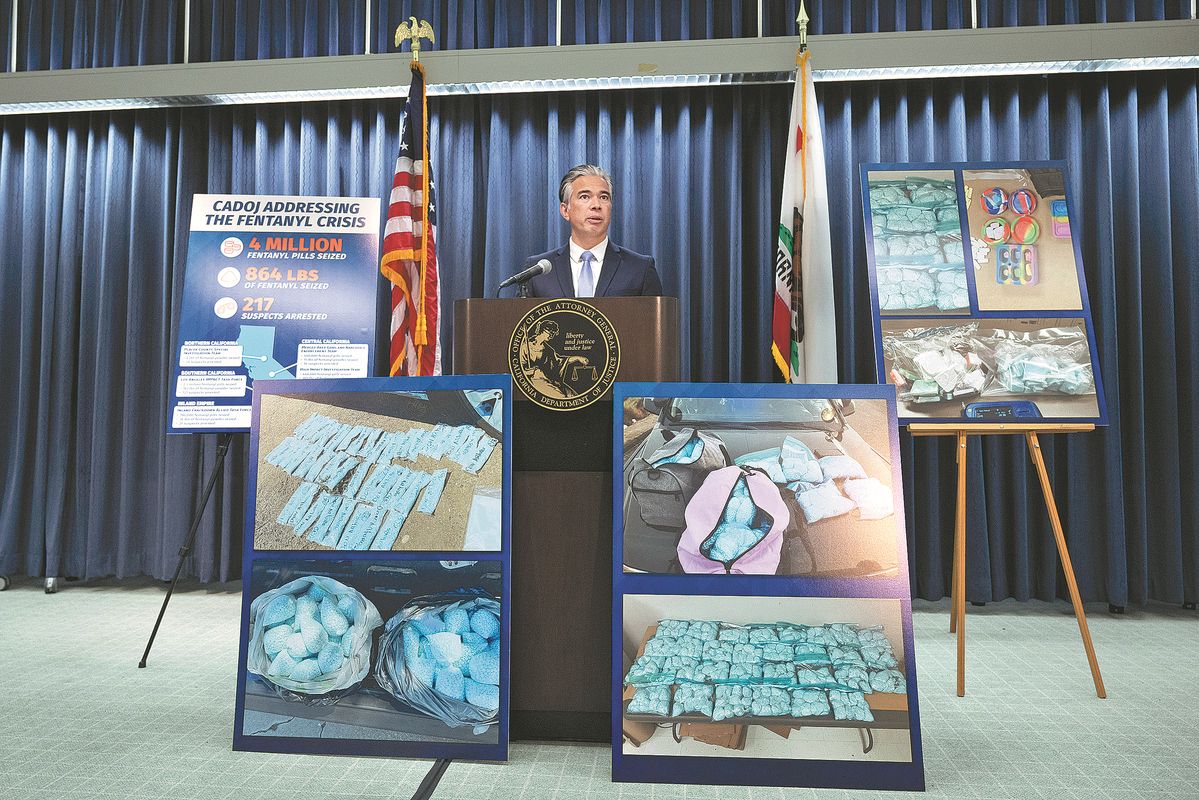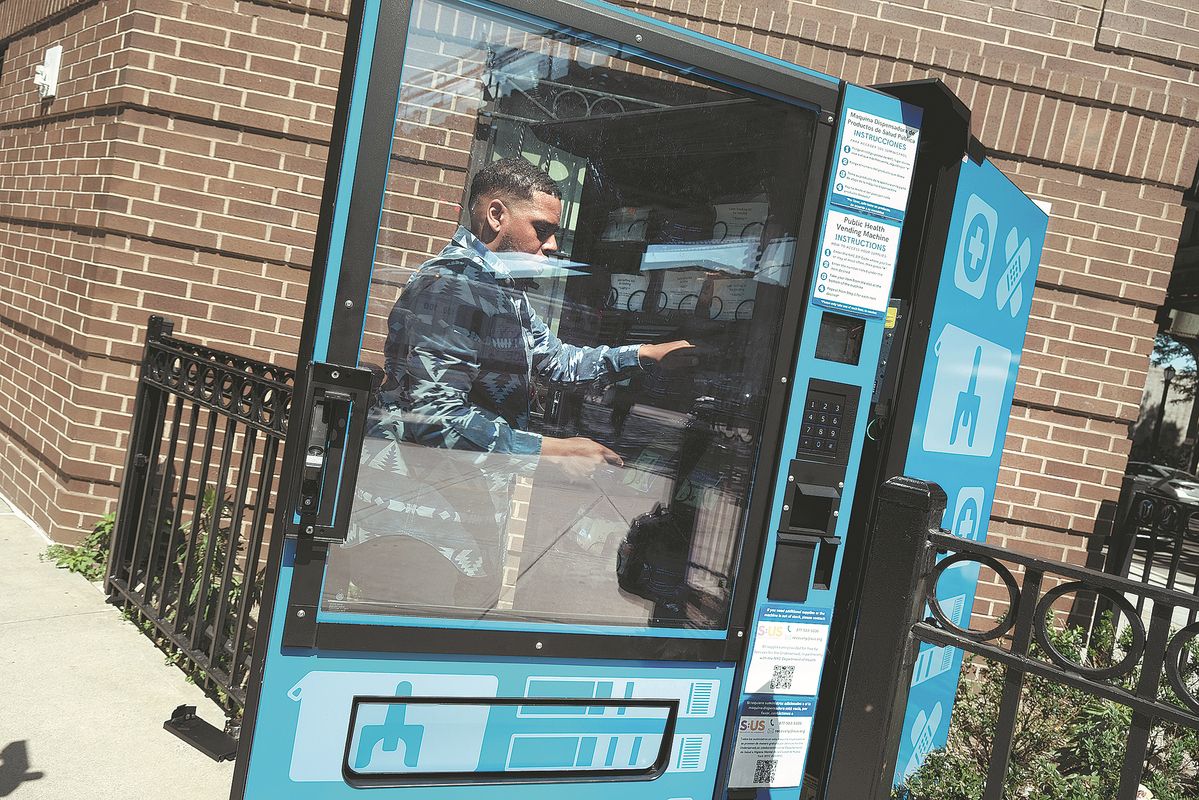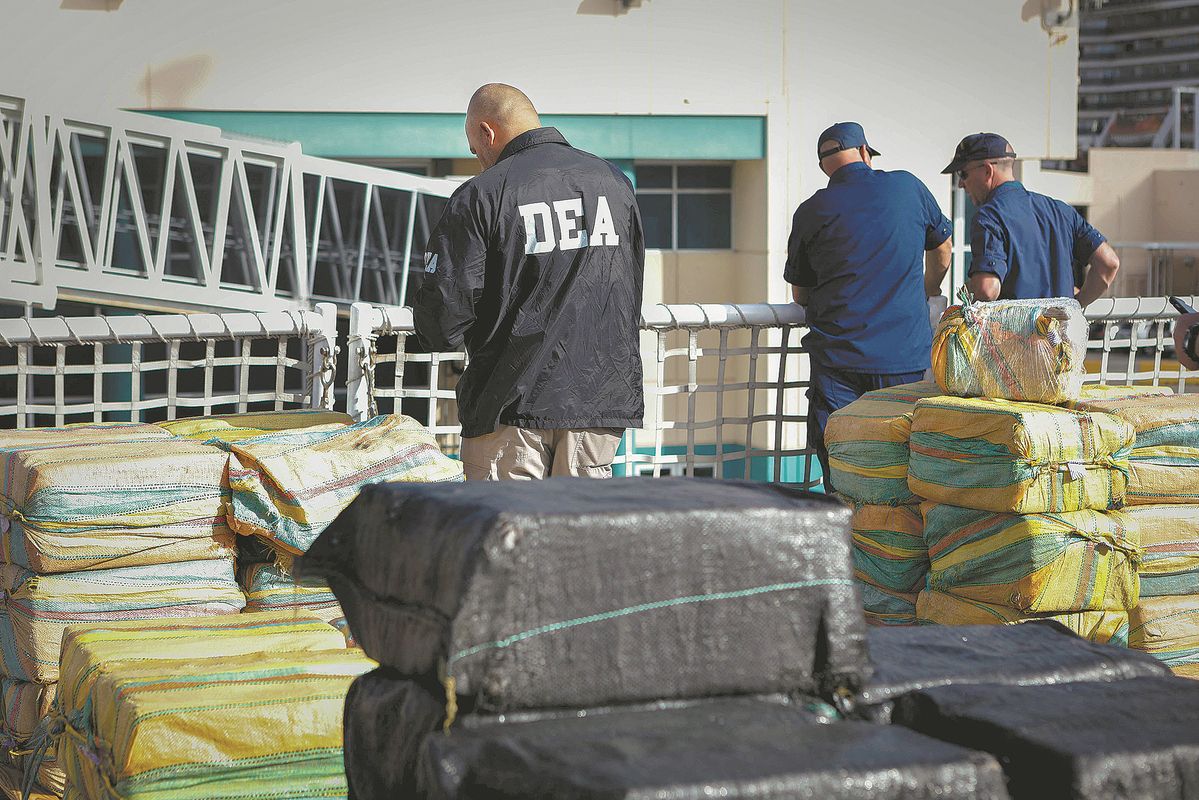
California Attorney-General Rob Bonta speaks during a news conference in Los Angeles in October last year on fentanyl enforcement action taken by the California Department of Justice. HANS GUTKNECHT/GETTY IMAGES
Deaths rocket from overdoses of drug up to 50 times stronger than heroin
Christopher Calvird, 29, who had always wanted to be a Christian pastor and start his own church, had ministered to people on the streets of San Francisco for the past five years.
But three weeks after his 29th birthday, Calvird, who had short brown hair and a dimpled face when he smiled, was found dead alone in a city park. When he realized that death was near, he dropped to his knees, dying in a posture of prayer.
An autopsy revealed that he died from fentanyl poisoning.
Fentanyl is 50 times stronger than heroin, and is a potent synthetic opioid drug like morphine, but 50 to 300 times stronger. Just the smallest amount can cause death.
Nearly 110,000 United States citizens died from drug overdoses and drug poisoning last year, data from the US Centers for Disease Control and Prevention, or CDC, show. That is about 300 people per day, more than twice as many as five years ago. Fentanyl is found in more than half of overdose deaths.
San Francisco health officials said deaths from overdoses of fentanyl in the city could set a record this year. In July alone, 71 people died from drug overdoses, and 80 percent of the overdose deaths this year have been caused by fentanyl, the officials said.
To date this year, 473 people have died from drug overdoses in San Francisco, with fentanyl responsible for 385 of these deaths. If the rate continues, the city will exceed last year's death total.
Last month, a billboard bearing a photograph of Calvird was erected next to a highway in California. Alongside his warm smile, written in large letters were the words "Fentanyl Kills". The billboard was put up by his heartbroken mother, Jennifer Burruel.
She told local television station KCRA, "The next time anyone laughs at somebody that's spaced out or on the streets, they have to remember there's a mother crying herself to sleep at night because that's their child out there."
Deaths related to fentanyl overdoses are rocketing in the US. In 2021, there were more than 70,000 overdose deaths from synthetic opioids alone, a toll surpassing the combined loss of US military personnel during the wars in Vietnam, Iraq and Afghanistan, the CDC said.
Created in Belgium in the 1960s, fentanyl was described by pain specialists as a "miracle drug". It works potently to alleviate extreme pain after surgery. Pharmaceutical fentanyl was approved by the US Food and Drug Administration as a pain reliever in 1998, and is typically prescribed to patients with severe or chronic pain.
However, it can also be deadly. Just 2 milligrams of fentanyl is a lethal dose, and doses as small as 0.25 mg place the user at a high risk. In comparison, a lethal dose of heroin is 100 mg, while 250 mg of cocaine is a lethal dose.

Drug users lie on a street in the Kensington neighborhood of Philadelphia, Pennsylvania, in July 2021. SPENCER PLATT/GETTY IMAGES
Primary source
The US Drug Enforcement Administration, or DEA, said cartels and other criminal groups in Mexico have become the primary source of fentanyl in the US. Some Republican lawmakers have linked the rising fentanyl trade with illegal immigration, claiming that the administration of President Joe Biden has lost border control with Mexico.
"It's your fault," Representative Andy Ogles of Tennessee shouted to Biden as he called for an end to the fentanyl crisis in the US during the president's State of the Union address in February.
"For him to stand there with a straight face, and tell us that he has a solution, when with a stroke of a pen he could have shut down the border… that offends me," Ogles said, linking overdose deaths to drug trafficking on the US border with Mexico. "He has not done a damn thing about it."
Meanwhile, Mexican President Andres Manuel Lopez Obrador rebuked US politicians in March. He said fentanyl is not Mexico's problem, but the US', adding that the US should use family values to fight drug addiction.
"Why don't they (the US) take care of their problem of social decay?" Lopez Obrador said. His statement came amid proposals by some Republicans to use the US military to attack drug laboratories in Mexico.
A report by The Washington Post said fentanyl was also being hidden in passenger vehicles and trucks passing through official ports of entry in California and Arizona.
More than 90 percent of the fentanyl is coming through official border crossings, Customs and Border Patrol, or CBP, officers said. But data from a Senate report on port security released in 2020 show the CBP was scanning only about 15 percent of commercial cargo and 1 percent of vehicles.
Fentanyl is popular among drug cartels because it is more powerful than other narcotics, which allows for smaller quantities to be smuggled more easily than heroin or cocaine. Fentanyl is mixed with other drugs to make them stronger and more valuable, but it is so deadly that one person could carry sufficient quantities to kill an entire city.
Last year, the DEA seized more than 50 million fentanyl-laced pills and over 4,535 kilograms of fentanyl powder — enough to kill every US citizen.

A vending machine launched by a nonprofit organization in Brooklyn, New York, disperses fentanyl test strips, naloxone and hygiene kits on June 5. SPENCER PLATT/GETTY IMAGES
Chronic escalation
In recent decades, the US government has addressed the issue of drug overdoses, but many missteps were made in the years before fentanyl hit the streets.
The first US opioid overdose wave stemmed from increased prescriptions of oxycodone and other prescription opioids in the 1990s. Overdose deaths involved such opioids, with US drug manufacturers, distributors and chain pharmacies making billions in profits.
Patient privacy laws and a lack of coordination among states in the US have allowed individuals to collect numerous opioid prescriptions. They then sell the excess pills.
The second wave began in 2010, with rapid rises in the number of deaths from overdoses of heroin. As the government cracked down on prescription opioids, some opioid users switched to heroin because it was easier to obtain.
In about 2013, the third wave started, with heroin dealers wanting to increase profits by mixing their products with fentanyl. At that time, federal authorities still considered fentanyl within the larger opioid crisis context, rather than acknowledging it as a separate threat that required a focused approach.
A report in The Washington Post last year revealed additional oversights by previous US administrations. For instance, the Arrestee Drug Abuse Monitoring Program that collected urine samples from recent offenders was halted in 2013 due to budgetary constraints.
Similarly, the Drug Abuse Warning Network, which compiled drug use and overdose information from medical facilities and emergency responders, was terminated in 2011.Although a version of the program was reintroduced in 2018, by then the fentanyl crisis had emerged.
Keith Humphreys, who served as a drug policy adviser to the George W. Bush and Barack Obama administrations, told The Washington Post: "These programs, as imperfect as they were, at least gave us something. And they were defunded."
Elissa Tierney, who leads canvassing efforts for the Not One More campaign, which unites grassroots efforts for drug crisis action and support, said: "The war on drugs has been going on for 50 years, and the overdose crisis is not getting better; it's getting worse. I think it's because politicians and people in authority are not listening to their recovery communities."
Former president Donald Trump took office on the cusp of the impending fentanyl crisis.
While Trump committed to building a wall along the US-Mexico border to halt drug trafficking, fentanyl was finding its way into the US primarily through ports of entry.
The New York Times reported that the administration was considering a potential elimination of the entire White House Office of National Drug Control Policy. That office, led by a "drug czar", had been used to lead the war on drugs.
In May 2017, the Trump administration was considering cutting 96 percent of the drug czar's office budget. In addition, Trump did not nominate the head of the office, Tom Marino, until nine months into his presidency.
Marino's nomination was swiftly withdrawn following a report by The Washington Post, which revealed that he had supported a bill that increased the challenges for the DEA to enforce federal law against drug manufacturers, distributors and pharmacies that were found in violation.
Tierney said: "Decade after decade, we see the same thing happen. They crack down on a drug, and then a deadlier drug comes right after that. It started with heroin. They started to criminalize heroin. Fentanyl came, and they started to criminalize fentanyl. … Every time they crack down on a drug, a deadlier drug is around the corner."
Sherri Walker Hobson, a former federal prosecutor and once an assistant US attorney in San Diego, California, has headed a fentanyl working group since 2017. The team tracks increasing seizures of the drug near a port in San Diego.
Hobson told The Washington Post last year: "They said they found that lethal fentanyl doses were coming from Mexican cartels, not China. There was so much focus on China, they didn't look at where the ball was. They weren't looking at the cartels in a serious way. It was all about China, China, China."
Until now, the US has not officially scheduled fentanyl-related substances as a class. Fentanyl analogues are temporarily controlled in the US, with the classification set to expire in December next year.
Meanwhile, Chinese Foreign Ministry spokeswoman Mao Ning has said China categorized and controlled fentanyl substances, and the controlled varieties far exceeded the scope of the International Drug Control Conventions, making China the first country to categorize and control such substances.
The permanent mission of China to the UN said on Sept 18 that China is opposed to any form of legalization of drugs and politicization of drug issues. "By far, China is the first and only country to officially schedule fentanyl substances as a class," the mission said.

A Drug Enforcement Administration officer stands next to packages of marijuana and cocaine seized at Port Everglades in Fort Lauderdale, Florida, in November 2021. EVA MARIE UZCATEGUI/AGENCE FRANCE-PRESSE
Uncertain impact
In May, the Biden administration publicly backed legislation to expand the criminalization of substance use by introducing new mandatory minimum sentences associated with fentanyl.
The New York Times quoted the National Conference on State Legislatures as saying that in the 2023 legislative session alone, hundreds of fentanyl crime bills were introduced in at least 46 states.
Lawmakers in Virginia have classified fentanyl as "a weapon of terrorism" — a move to increase prison sentences for drug dealers. A law in Iowa introduced sentences of up to 50 years for selling fentanyl.
Arkansas and Texas have joined some 30 states, including Pennsylvania, Colorado and Wyoming, in implementing homicide statutes related to drugs. The laws allow for murder charges, even for those who share drugs socially if they contain deadly fentanyl doses.
But critics said the drug policy should prioritize preventing fatal overdoses, rather than criminalizing and punishing people who are struggling.
Tierney said: "The focus of drug policy right now should be on preventing as many fatal overdoses as possible. But instead, the US is once again trapped in a disastrous drug war that focuses on punishment over the goal of saving lives.
"Members of Congress and dozens of states, including New Jersey, are moving toward enacting harsher drug penalties despite decades of evidence that severe punishments do little to deter drug use or drug dealing."
In New Jersey, lawmakers are decreasing the fentanyl threshold for second-degree crime, pushing forward a bill that would increase fines and prison time for people caught with the drug.
Tierney said going to prison for fentanyl possession and intent to distribute it ruins the lives of people who want to recover. "And when people leave jail, their criminal records follow them throughout their lives, making it much more difficult to find stable housing and work," she added.
"Punishing people for having substance use disorder, rather than focusing on real solutions, just keeps us in a cycle of pain and isolation. We're not treating this as a public health crisis right now."
Xinhua contributed to this story.
信息網(wǎng)絡傳播視聽節(jié)目許可證:120330032
中華人民共和國互聯(lián)網(wǎng)新聞信息服務許可證:45120170002
中華人民共和國互聯(lián)網(wǎng)出版許可證 (署)網(wǎng)出證(桂)字第020號
廣播電視節(jié)目制作經(jīng)營許可證編號:(桂)字第0230號
網(wǎng)警備案號:45010302000253
桂ICP備11003557 南寧新聞網(wǎng)版權(quán)所有
舉報電話:0771—5530647 郵箱:mail@nnnews.net
登錄
還沒賬號?立即注冊
點擊頭像快速登錄
請輸入驗證碼